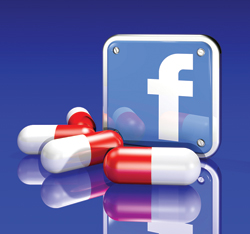Sophia, as she is called, has a life-like skin called “Frubber” through which an electric current can be passed, allowing the robot to mimic 62 facial and neck expressions.
Meet Sophia, a human-like robot with some big ideas
Human-like robots have taken a big step toward becoming a reality.
Sophia, as she is called, has a life-like skin called “Frubber” through which an electric current can be passed, allowing the robot to mimic 62 facial and neck expressions.
She also has cameras for eyes, which enable her to recognise humans and even make eye contact. Sophia also has voice recognition capabilities thanks to Google Chrome and other artificial intelligence systems.
Through interaction with humans, Sophia’s creators say the robot will get smarter over time.
Sophia defies conventional thinking of what a robot should look like.
She has a slender nose, high cheekbones, an intriguing smile, and deeply expressive eyes that seem to change colour in light.
Sophia is Hanson Robotics’ latest and most advanced robot. She has also become a media darling, having given numerous interviews to multiple media outlets, sang in a concert, and even graced the cover of one of the top fashion magazines.
One of her interviews has generated billions of views and social media interactions. She has also shown her potential in business, having met face-to-face with key decision makers across industries including banking, insurance, auto manufacturing, property development, media and entertainment.
In addition, she has appeared onstage as a panel member and presenter at high-level conferences, covering how robotics and artificial intelligence will become a prevalent part of people’s lives.
Facebook, the world’s most addictive drug
Facebook has defied even optimists’ projections of how big the 12-year-old firm could one day become. Today the company’s flagship social network claims 1.6 billion users, around a billion of whom log on each day. Facebook has attracted and engaged many users by engineering features that are highly addictive and relevant to their lives, so people keep coming back for more hits (otherwise known as updates).
The amount of data Facebook collects on users has helped it become the world’s second-largest advertising company on mobile devices. Last year it claimed 19 percent of the $70 billion people spent on mobile advertising globally, compared to Twitter’s paltry 2.5 percent. Its data advantage will make it difficult for rivals to unseat it, which explains why its market capitalisation has risen to around $325 billion today.
Some might think that people already spend too much time on the social network. According to one estimate, most Americans spend the equivalent of two full workdays each month on Facebook.
Facebook is even expected to announce more plans for turning Messenger, one of its messaging services, into a portal through which people can fulfill tasks, like ordering taxis and communicating with businesses.
Zuckerberg is hoping that Facebook will be an even bigger part of the mobile ecosystem in the future. Being both useful and addictive could win Facebook even more friends.